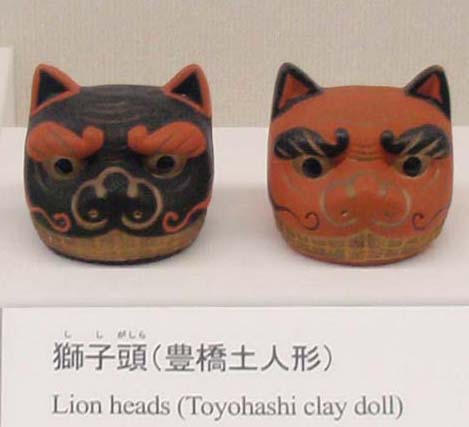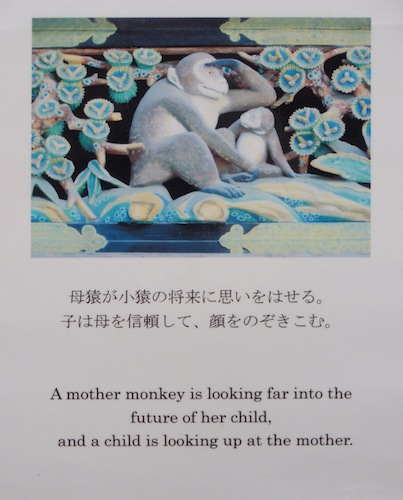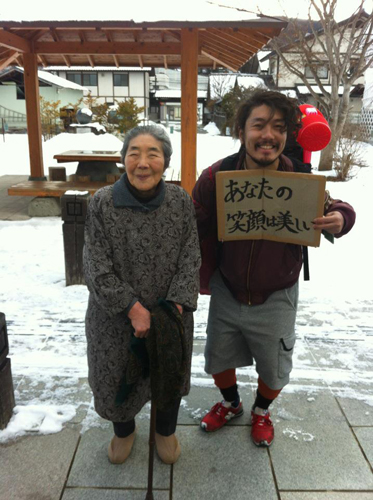181. The "Big Shell" Radical: 頁
When a radical has a name like "big shell," you just know there has to be a "small shell" radical kicking around somewhere. Indeed there is. That's radical 154, 貝 (かい, かいへん, and こがい).
Photo Credit: Eve Kushner
The two "shell" radicals combine in 貝類 (かいるい: shellfish).
The Names of the 頁 Radical
Just as the English name "big shell" differentiates 頁 from 貝, so do two of the Japanese names for 頁. The Japanese call this radical おおがい, いちのかい, and ページ, each for a different reason:
• おおがい: This corresponds to 大貝, "big shell."
• いちのかい: People perceive 頁 as 一 (いち) + ノ (の) + 貝 (かい).
• ページ: In addition to being a radical, 頁 is an autonomous, non-Joyo kanji that can mean "page" or "sheet (of paper)." Thus, one can read the 頁 radical as ページ, even though it bears no connection to pieces of paper. It follows that "page" and "sheet" are alternate English names for this radical. What a big leap from seashells!
The Shape of the 頁 Radical
The 頁 radical always appears on the right side of a character, as in these examples:
題 (340: title, topic, problem)
類 (602: kind, sort, species)
頂 (940: summit; to receive humbly)
頃 (2011: time; about; convenient)
As you can see, when the radical is in a character, it's skinnier than the autonomous 頁.
This radical shape always has nine strokes and has no variants.
Photo Credit: Kevin Hamilton
This sign advertises 50 kinds (種類, しゅるい) of something—nail clippers, actually! Do 50 kinds really exist?!
The "Big Shell" Radical Is No Shell!
We've seen that although the 頁 kanji can mean "page" or "sheet (of paper)," the 頁 radical has no such meaning. The next reasonable guess would be that this radical symbolizes "seashell" (or the related meaning of "money," as seashells represented money in ancient times). Actually, unlike 貝, it never seems to do so!
Here's the only instance I've found of a kanji with 頁 and a connection to shells or money:
頼 (1889: reliance; request; trust)
People originally wrote the right side with 刀 over 貝, and in that context the 貝 meant "shell" or "currency," says Henshall in his newer edition. But this etymology is about 貝, not 頁!
Two more characters have a connection to money, so you would think that "seashell" could be relevant. However, that's not the case:
額 (635: amount (of money), sum, quantity; picture frame; forehead)
In this character, our radical means "head," and the left side means "visitor," though 客 acts phonetically here to mean "shave." Because the ancient Chinese often shaved their hairlines back to exaggerate their foreheads, 額 initially meant "forehead" and still can, says Henshall. Scholars think that the other meanings are simply associated with that, including "sum," though the path to that definition is quite obscure.
預 (801: deposit; entrust, leave with; take charge of)
In this character 頁 means "face." Meanwhile, says Henshall, the 予 means "already" but acts phonetically to express "relax." Thus, 預 originally meant "facial expression of relaxation." The other meanings are borrowed. Again, we see nothing to do with shells here.
We can conclude that the "big shell" radical is called that purely because of its visual similarity to 貝.
Photo Credit: Corey Linstrom
In referring to the peak of Mount Fuji, this marker includes 頂 (940: summit) in 富士山頂 (ふじさんちょう: peak of Mount Fuji). By the way, with 冨, we're seeing a variant form of 富; the kanji on the marker is missing the first stroke.
The 頁 Radical as "Head"
It turns out that 頁 means "head" most of the time. Henshall says "head" was its original meaning in China, where 頁 can still mean that. The shape is a pictograph of a "person with an exaggerated head," he notes.
In the following examples, it's quite clear that 頁 means "head":
頭 (186: head)
Henshall says that this character combines 頁, "head," with 豆, "bean" or "vessel," yielding "vessel that is the head."
顔 (93: face)
The 頁 combines with the left side, which means "attractive forehead"! Together, they once meant "attractive face," though this evolved to mean simply "face."

Photo Credit: Eve Kushner
Heads of toy lions on display at Nagoya Castle. The first three kanji break down as follows:
獅子 (しし: lion), where the first kanji is non-Joyo
頭 (かしら: head)
Is it just me, or do these animals look more like pigs?

Photo Credit: Eve Kushner
Toshogu Shrine in Nikko, which is in Tochigi Prefecture, showcases several monkey carvings, as well as images that provide detailed explanations. Our radical appears twice in the second line here! It's in these terms:
信頼 (しんらい: reliance, trust, faith)
顔 (かお: face)

Photo Credit: Tokyo Circus
In January 2012, Tokyo Circus Ringmaster Yoshi visited Iwate Prefecture, hard-hit by the disasters of March 11, 2011. He aimed to make the people smile (and clearly succeeded). Here's what his sign says:
あなたの笑顔は美しい
Your smile is beautiful.
笑顔 (えがお: smiling face);
美しい (うつくしい: beautiful)
The 頁 radical appears right in the middle of the second line.
Types of Kanji Featuring 頁
We've seen kanji with 頁 that represent the face or the head. Here are more of that ilk:
顎 (1858: chin; jaw)
頰 (2111: cheek)
Other kanji featuring this radical fall into a few categories. One group involves imposing one's will:
願 (446: wish; to ask a favor)
順 (506: order, sequence, turn; to obey)
領 (806: territory; domain; take possession of; leader)
The other group relates to digging in one's heels:
頑 (1119: stubborn)
頓 (2081: sudden; to stay in place, stop)
Actually, 頓 means "sudden" more often than "to stay in place," but it does play a role in terms related to impasses and deadlocks.
Though I've spotted these throughlines, there should be none at all. Henshall's etymologies of each kanji indicate that any similarity in meaning is a sheer coincidence.
The next group is definitely a mishmash:
顧 (1235: to look back, review; take care of (someone))
項 (1262: clause; item; nape of the neck)
頻 (1745: frequently)
Originally, 項 (1262) meant "back of the head," which extended to "nape of the neck," says Henshall. Thus, a kanji containing 頁 represents another part of the head, even though 項 has since acquired meanings that have nothing to do with anatomy.
For that matter, 頻 (1745) once involved "wrinkles" and "frown" and can still mean those things, though very rarely, says Henshall.

After the disasters of March 2011, this public service announcement asked people to conserve electricity. Here are the biggest words:
節電 (せつでん: conserving electricity)
願う(ねがう: to request, implore)
At this scale, it becomes possible to see that the top horizontal strokes of 願 almost blend into one.
Photo Credit:
Eve Kushner
In this context, the word 順路 (じゅんろ: suggested route (for visitors)) indicates where to find monkeys. It's always good to know where the monkeys are!
